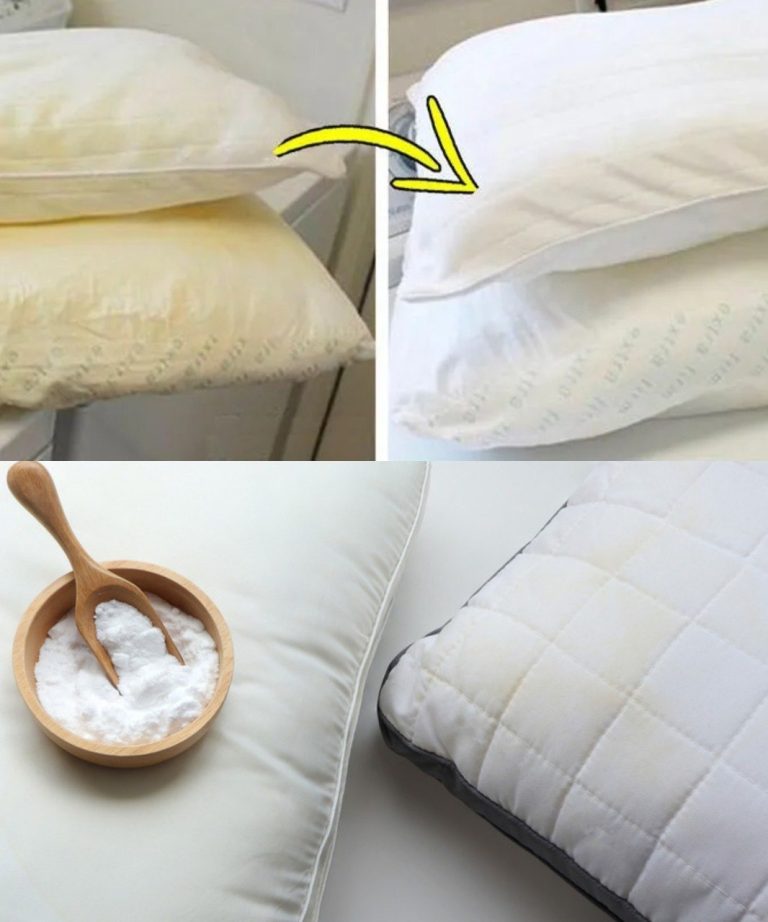ADVERTISEMENT
# How to Whiten Yellowed Pillows: Simple and Effective Tips
Pillows are essential for a good night’s sleep, providing comfort and support to our heads, necks, and spines. Over time, however, pillows can become yellowed and stained due to sweat, body oils, makeup, and even saliva. While this may be a normal part of their wear and tear, yellowed pillows can leave your bedroom looking less than pristine. Fortunately, there are simple and effective methods to restore your pillows to their bright, clean, and fresh condition.
In this article, we will discuss the causes of yellowing pillows, the materials and tools needed for the cleaning process, and step-by-step instructions for whitening yellowed pillows. Whether you’re dealing with a set of memory foam pillows, down pillows, or synthetic ones, we’ve got a solution for every type.
## Why Do Pillows Turn Yellow?
Before we dive into cleaning tips and techniques, it’s important to understand why pillows become yellowed in the first place. There are several factors that contribute to pillow yellowing, and knowing the causes can help you prevent it in the future.
### 1. **Body Oils and Sweat**
One of the main causes of yellow stains on pillows is the accumulation of sweat and body oils over time. While you sleep, your body naturally secretes sweat and oils, which are absorbed by your pillowcase and pillow. If you don’t wash your pillowcases regularly or if your pillowcase doesn’t provide a sufficient barrier, the oils and sweat can gradually seep into the pillow itself, leading to yellowish discoloration.
### 2. **Makeup and Skin Products**
If you wear makeup or skincare products, these can also contribute to yellowing on your pillows. Foundation, concealer, night creams, and oils can transfer onto your pillow when you lay your head down, leaving behind unsightly yellow stains.
### 3. **Saliva**
Drooling during sleep (which happens more often than we might think) can also contribute to yellow spots on your pillows. The saliva’s moisture, combined with bacteria and acids, can stain the fabric of the pillow, resulting in yellow discoloration over time.
### 4. **Moisture from Humidity**
Excessive moisture or humidity in the air can encourage mildew growth, especially in damp areas or rooms with poor ventilation. If your pillow is exposed to this kind of environment, yellowing can occur due to the accumulation of bacteria or mildew spores.
### 5. **Age of the Pillow**
Over time, pillows naturally degrade. This natural breakdown of materials can also lead to yellowing. Old pillows, in particular, might become discolored due to the constant exposure to heat, moisture, and wear.
### 6. **Improper Washing Techniques**
Finally, improper washing techniques can also cause pillows to yellow. Using too much detergent or not thoroughly rinsing the pillow can leave behind soap residue, which can cause discoloration. Additionally, pillows that aren’t dried properly can develop stains or retain moisture, leading to yellow spots.
## What You’ll Need to Whiten Yellowed Pillows
Now that we’ve identified the causes of yellowing pillows, it’s time to talk about the tools, materials, and ingredients you’ll need to get your pillows looking as good as new.
### 1. **Laundry Detergent**
The first step in cleaning yellowed pillows is to wash them thoroughly. Choose a mild, gentle detergent that’s free from harsh chemicals. If you have sensitive skin, make sure the detergent is hypoallergenic. If you have a specific stain remover on hand, such as a pre-treatment spray or gel, this can help address stubborn stains.
### 2. **Baking Soda**
Baking soda is an excellent natural cleaner that can help lift stains and neutralize odors. It’s gentle on fabrics but strong enough to help remove the grime that can cause yellowing. Baking soda is a must-have ingredient for the whitening process.
### 3. **White Vinegar**
White vinegar is another natural cleaner and deodorizer that can help with yellowing. It works as a mild acid to break down body oils and other residues, and it also softens fabric, leaving pillows fresh and fluffy. Vinegar is also an excellent fabric softener, so it helps make the pillow more comfortable.
For Complete Cooking STEPS Please Head On Over To Next Page Or Open button (>) and don’t forget to SHARE with your Facebook friends
